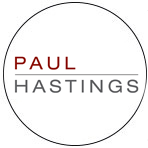
It’s no secret that the United States takes diversity very seriously. Since the advent of the Bill of Rights – which in 1789 laid bare the basic personal freedoms, civil liberties and protections guaranteed by the Constitution – diversity and inclusion has been an evolving process.
‘Our workforce and our entire economy are strongest
when we embrace diversity to its fullest, and that means
opening doors of opportunity to everyone and recognizing
that the American Dream excludes no one,’
– Secretary Thomas Perez, US Department of Labor.
When the Civil Rights Act was enacted in 1866 in the aftermath of the Civil War, it became the first federal law to define citizenship and the right to equal protection under the law, ‘without distinction of race or color, or previous condition of slavery or involuntary servitude’. This came to be a building block of the Fourteenth Amendment to the Constitution and introduced the Equal Protection Clause, which gave rise to the popular phrase ‘equal rights under the law’.
But while the protections afforded by both the Civil Rights Act and the Fourteenth Amendment are today regarded as relatively basic human rights, they have at the same time been some of the most heavily litigated pieces of legislation since their inception, demonstrating the extent to which American lawyers have been at the front line in the fight for diversity and inclusion. Take for example Brown v Board of Education (1954) which helped to dismantle racial segregation; Roe v Wade (1973) which gave rise to the legalization of abortion; and Obergefell v Hodges (2015) which introduced same sex marriage.
The efforts of the government and outside counsel with respect to diversity and inclusion – particularly from a legislative perspective – are especially evident. But what about the fight for change in the workplace and the role of in-house counsel in proactively pushing that agenda forward?
It was in the 1990s that the fight for workplace equality truly stepped up a notch. That decade saw a number of multimillion-dollar lawsuits and class action cases in the name of discrimination – with those against Wall Street financial institutions particularly prominent. The very public controversy around Clarence Thomas’ nomination and eventual ascension to the Supreme Court in light of Anita Hill’s allegations of sexual harassment when working for him once again put equality in the spotlight and reinforced the requirement for reform.
Strategic benefits of diversity: the power of difference – Greg Nitzkowski, managing partner

We’ve built our power of difference by recruiting diverse lawyers into our ranks and creating a culture in which their talents can flourish. Our most newly minted lawyers have grown up in a world that is more diverse and globally integrated, and their personal, professional, and social values reflect those experiences. Attracting a deep pool of talented and diverse lawyers as they enter the legal workforce for the first time is fundamental to our long-term success.
We also encourage our lawyers to bring their unique perspectives to our work and our culture. Ours is an inclusive environment. This distinguishes us in the market because it ensures that we attract and retain the best talent and can harness that talent to create innovative solutions for our clients.
In addition to serving as managing partner, I also co-chair the firm’s diversity council. My hands-on leadership of the council helps ensure the success of our diversity strategy. I share my partners’ pride in our ability to create an inclusive professional environment that provides real opportunities for diverse lawyers to develop, grow, and advance.
The legal community in the US has been more outwardly vocal than any other in regard to diversity and inclusion, which is reflected in the depth and breadth of the interviewees as part of this project, as well as the issues into which they have inserted themselves. For example, PepsiCo’s general counsel Tony West with his role in the legal battle for marriage equality during his time serving as Assistant Attorney General of the United States, or Olga Mack for her work in furthering the role and representation of women on executive boards and throughout Silicon Valley. Similarly, companies as a whole have shown little aversion to speaking out and using their influence to help incite legal reform, from Morgan Stanley’s early support of the Marriage Equality Act, through to PayPal and Salesforce’s strong stand against North Carolina’s infamous ‘Bathroom Bill’.
It’s also the case that many leading in-house lawyers in the US have been proactive in using their purchasing power and influence as a client to help elicit change from external law firm suppliers. While some reported that this movement somewhat lost its way as a result of the global financial crisis, the strength of the mandate communicated by those who took part in our research made it clear that the importance of diversity and inclusion is firmly back front and center for business – from corporate behemoths through to start-up companies.
Strategic benefits
The strategic benefits of diversity and inclusion are not just the right thing to do in an ethical sense but a common reframe is that this makes good business sense.
‘I think it’s absolutely critical for a company to embrace diversity and inclusion. At Salesforce, we operate in a very competitive industry – one that is evolving every day and where innovation isn’t a ‘nice to have’, but a business imperative,’ says Amy Weaver, general counsel at Salesforce.
‘We’re confident that such an environment fosters innovation and creativity, so our goal is to ensure that we have the right people here who are going to continue to innovate with us and keep us on top.’
Increasingly, what makes good business sense is putting people first both internally and externally. It’s no coincidence that two radically different companies often sit atop the Forbes list of best places to work in the US: technology behemoth Google, and family run grocery store Wegmans. But their dissimilarity at first glance is belied by the common ground both share in putting their employees at the center of what they do.
This drive to put communities first, both internal communities of employees and external communities of customers and consumers, is driving much of the engagement with respect to diversity and inclusion. This is partly due to traditional markets become increasingly saturated, meaning that companies must appeal as broadly as possible – a characteristic which is difficult to have if you don’t reflect the realities of the markets in which you operate.
Distinct role lawyers can play: the only woman in the room – Sunayna Ramdeo, almuna
‘My experiences as a minority and a woman have made me particularly sensitive to the ways organizations view diversity and inclusion, and that
awareness has been heightened since I became a parent,’ says Sunayna Ramdeo, an alumna of Paul Hastings who now serves as compliance counsel at Mitsubishi Corporation. ‘There have been many times in my professional life when I was the only female in the room. These situations have made me acutely aware of how I present myself and how I am perceived.’
For Ramdeo, understanding the power of diversity – and seeing that power recognized by the organizations in which she has worked – has been incredibly important. ‘We live in a diverse society, and all of us benefit from working in professional environments that reflect that reality,’ she says. ‘When you have a truly inclusive team, you receive the benefit of different perspectives that can help create new approaches and novel solutions.’
Ramdeo is encouraged to see law firms and companies across industries recognizing the value that diverse, inclusive teams bring to their business. During her time at Paul Hastings, she served as co-chair of the firm’s LGBT affinity network, which provides mentoring, networking, and professional development opportunities. In addition, she focused her pro bono work on issues such as marriage equality.
When it comes to fostering greater diversity and inclusion, Ramdeo notes that lawyers can be instrumental because of their ability to serve as advocates: ‘Lawyers have the voice and the platform to make a difference. They have the ability to do something not many people can do – they can actually help change the law, in addition to changing attitudes.’
As Eric Grossman at Morgan Stanley comments, ‘we don’t make anything, but rather we serve the communities we operate in. But we don’t always reflect, in the ways we would like, those communities. Putting aside the moral and ethical issues, we just think this is bad business, and as a goal we want to better reflect the communities we serve.’
It’s also true that business in the 21st century thrives on the thrill of the new, whether this is incrementally innovative or out and out disruptive. To drive creativity and innovation, diversity of thought which comes from diversity of experience is fundamental. Ajay Banga, chief executive officer at MasterCard, has made it clear that this is a business imperative and fundamental to their corporate mission and growth. ‘Diversity is what drives better insights, better decisions, and better products. It’s the backbone of innovation. It’s what defines a great leadership culture,’ says Banga.
Banga has made financial inclusion a central element of MasterCard’s business strategy moving forward, which general counsel Tim Murphy says is a business imperative borne out of diversity. ‘If we only focus on individuals who already have access to financial services, we limit our growth trajectory; if we focus on those who do not have banking or other financial accounts, we open ourselves to more growth,’ says Murphy.
‘Diversity and inclusion is therefore helping the company engage more widely and with a broader audience – that speaks to how diversity is helping to drive our business strategy. In a fundamental sense, the company cannot do what it needs to do in regards to inclusive growth without diversity.’
This ability to harness different ways of thinking is a common thread through both the largest and the smallest companies who participated in our research, the bulk of whom insisted it is central to success as a business.
The creativity of different points of view is fundamental throughout an organization, but a sticking point for many companies, and certainly many law firms, is the lack of diversity at the top of the tree or even the higher branches. Those companies which are very successful in other aspects of diversity are still struggling with this conundrum.
‘If we think of diversity as the mix, inclusion is how we make the mix work. It’s taking all the distinct, unique components of diversity and combining them in a way that amplifies each unique contribution and results in something greater than the sum of its parts,’ explains Caroline Tsai, deputy general counsel at the Bank of Montreal.
